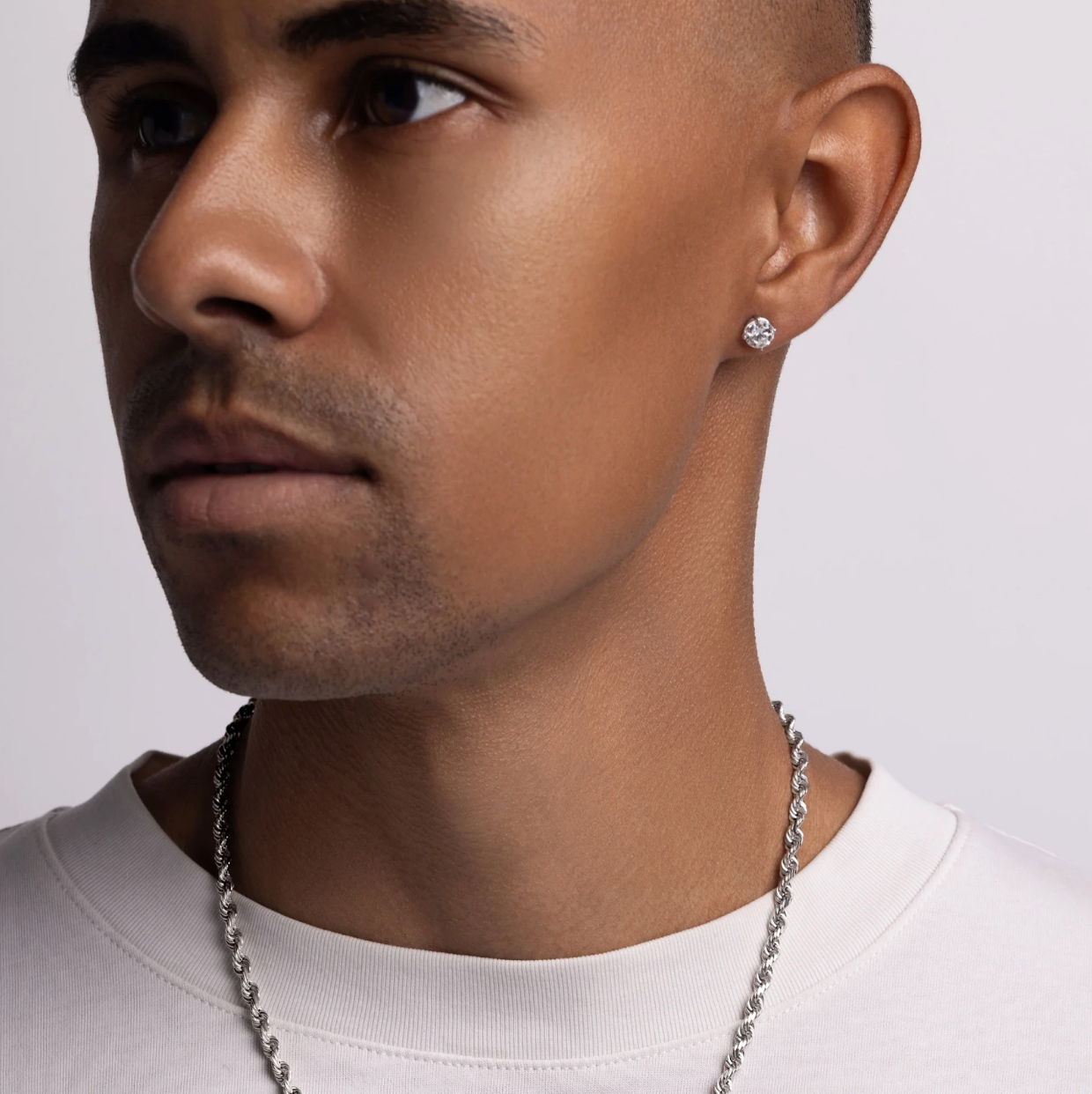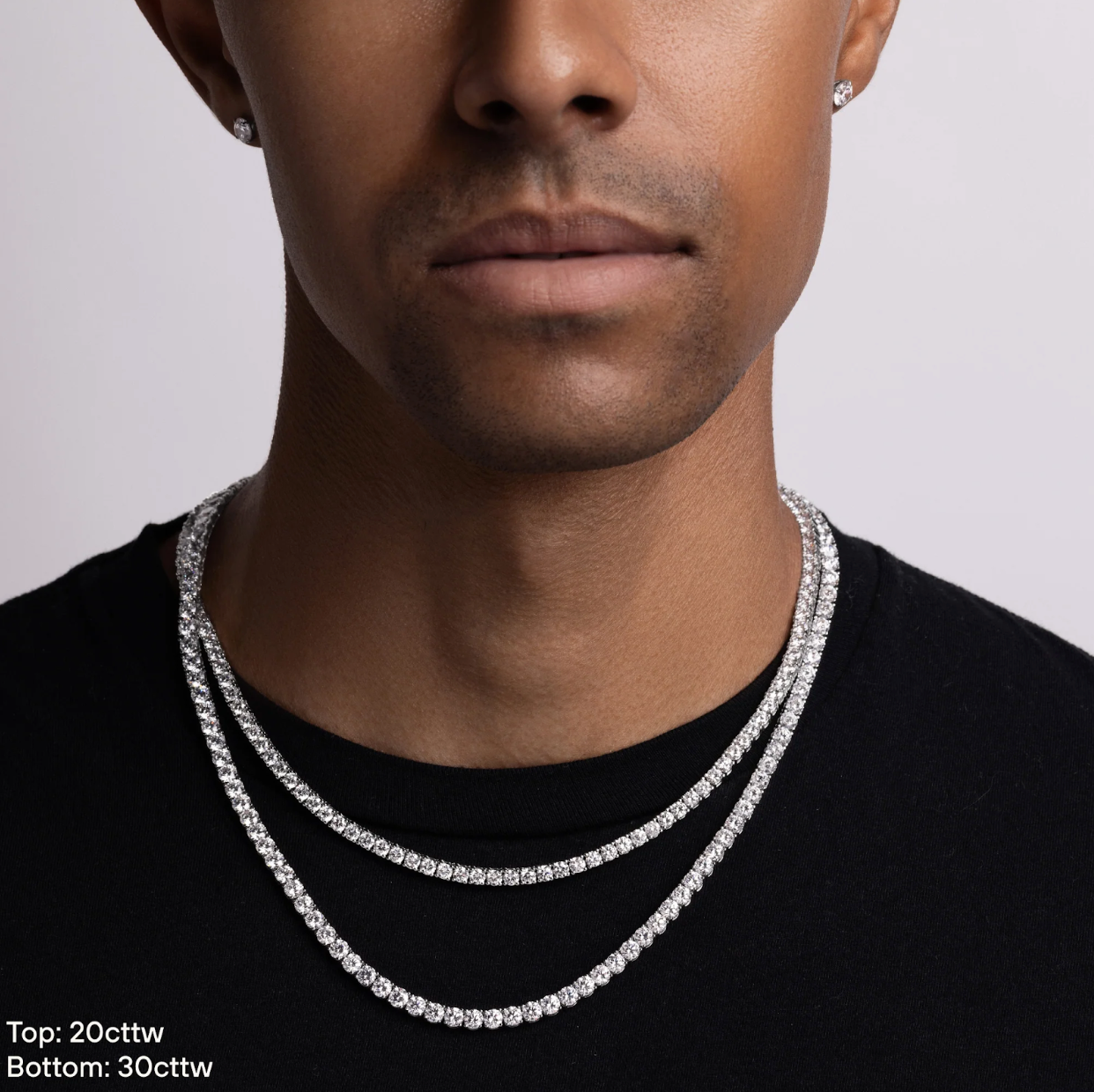Pictured from left to right: Moissanite, Diamond
While diamonds are considered a girl’s best friend, there is a competitor that has been stealing the show for some time now. An alternative to the traditional diamond is a moissanite and it’s been keeping up with the classics when it comes to engagement rings. If you’re wondering about the differences between an oval moissanite vs diamond, and if it’s worth substituting the class of a true diamond for this new age gemstone, let’s find out!
What is a Moissanite?
Moissanite is technically an out-from-this-world gemstone. The original moissanite came from the stars, which was discovered by Henri Moissan back in 1893. The French scientist, after whom the gemstone has been named, discovered microscopic particles from a crater where a meteorite fell. At first, Moissan thought that what he discovered was diamond, but upon further inspection, the crystals consisted of silicon carbide.
With trial and error, the Moissan’s discovery was successfully curated in the laboratory, thus giving birth to the moissanite. Today, real moissanite is very rare to find.
Moissanite vs Diamond: Key Comparison

For the unversed, they may find moissanite similar to diamond. They give the pretense of being a diamond, however, if one looks at moissanite, the differences are crystal clear. They also have different compositions. Perhaps, the only thing similar between them is that they both make good thermal conductors.
Durability
The durability of gemstones is measured using the Mohs Scale of Hardness. The scale measures a gem’s capability to endure scratching. When it comes to durability, moissanite vs diamond does not differ significantly. Both gemstones are suitable for daily wear because they have high Mohs Scale of Hardness scores. A moissanite stone scores 9.25 on the scale, while a diamond, being the hardest mineral ever known to man, has a score of 10.
Brilliance
Brilliance is the stone’s ability to reflect light from its interior. One way to distinguish moissanite from a diamond is through its brilliance. Moissanites can have an enhanced brilliance that gives it a “disco ball” effect, specifically when placed under sunlight. These rainbow flashes may be beloved by some, while abhorred by others.
The refractive index of moissanite is higher than a natural diamond at 2.65 – 2.69. The bigger the moissanite is, the more you can distinguish it from a diamond. Moissanite does not attract dirt and grease as much as diamonds do, so you don’t have to clean it as often compared to diamond rings.
Diamonds have a brilliance refractive index of 2.42. A diamond has three different ways to reflect light. One is its brilliance, while the other two are dispersion and scintillation. As these three are combined, it lends the diamond its much-beloved sparkle.
Color
Moissanite and diamond can both be colorless and nearly colorless. Moissanite gems may still show yellow or grey tones given under certain light conditions. The bigger the moissanite is, the more you can notice its actual color. A mined diamond may also produce yellow or grey hues depending on the environmental factors that it was subjected to. The clearer the diamond, the more expensive it is.
Clarity
This attribute refers to the imperfections (or the absence of imperfections) in a gemstone. The highest diamond clarity grade is FL, which means flawless. This grade means that the diamond has no blemishes or significant imperfections that can depreciate its value. Diamonds have more levels of clarity, while moissanites are mostly nearly flawless. Hence, you won’t have much trouble looking for a moissanite center gem given that they have consistent levels of clarity as opposed to diamonds.
Source
Natural moissanite was originally discovered at a meteor site. Since meteor falls on the earth are rare, this stone has been recreated and reproduced in a laboratory setting. Lab-created moissanites are eco-friendly since they do not need to be mined. In contrast, a diamond can either be mined naturally or be considered a lab diamond that’s man-made.
Price
Pieces of jewelry with top-tier gemstones are quite expensive. Diamonds, for instance, have varying prices depending on many factors. Natural diamonds are more expensive than lab-created diamonds. The cut, clarity, color, and carat are also some of the factors that affect a diamond’s price. Moissanites are cheaper than diamonds and may also vary in price depending on their size and whether the stone is considered premium or super-premium.
Oval Moissanite vs Diamond: Which Is Better?
Oval moissanites are distinguishable from oval diamonds. You can distinguish the two because oval moissanites are shorter than oval cut diamonds. A 2-carat oval diamond may have a measurement of 10mm L x 7mm W, while the same carat oval moissanite may only measure 9mm L x 7mm W.
In terms of which is better, that will depend on your own personal preferences, style, and budget. If you are a traditionalist, you’ll likely lean toward a diamond, but if you’re open to other options a moissanite is a great one.
How To Differentiate a Moissanite from A Diamond?
If you are placed in a situation where you have to know which one is which, you can follow this trick. Use a small magnification device called a loupe and look at the crown of the stone at an angle. When you see double refraction indicated by two slightly blurred lines, it is a moissanite. Take note, that double refraction is easier to identify in some cuts and shapes than in others.
Benefits of Moissanite
Getting a moissanite gem for an engagement ring is a good diamond alternative. Some advantages of having a moissanite ring include:
Durability
Though diamonds are harder on the Mohs Scale, moissanites do not trail far behind. A moissanite stone excels where durability is concerned. You can be assured that it can resist abrasion and scratching. It won’t chip and break easily.
Longevity
The moissanite’s natural durability also equates to its longevity. Hence, moissanite jewelry can make a good family heirloom too.
More Sparkle
Moissanites create more of a rainbow sparkle compared to diamonds. So even when the light is dull, you can still get a good shine from moissanite jewelry.
Budget-Friendly
Moissanites are generally cheaper than diamonds by 30% or more, but still prove to be a good alternative. A moissanite’s price is only affected by the size of the stone and whether it has been enhanced or not.
Conclusion
The final choice lies in you. Whichever stone you choose between a moissanite and a diamond depends on your personal preferences as well as your budget. Be mindful and know the differences between the two options. It also helps to look for a trusted jeweler to ensure that you get the best stone worthy of your money.
If you have any questions and need clarification, please feel free to send us a message or give us a call!





Share:
Round vs Oval Diamonds
How to Buy an Engagement Ring Online